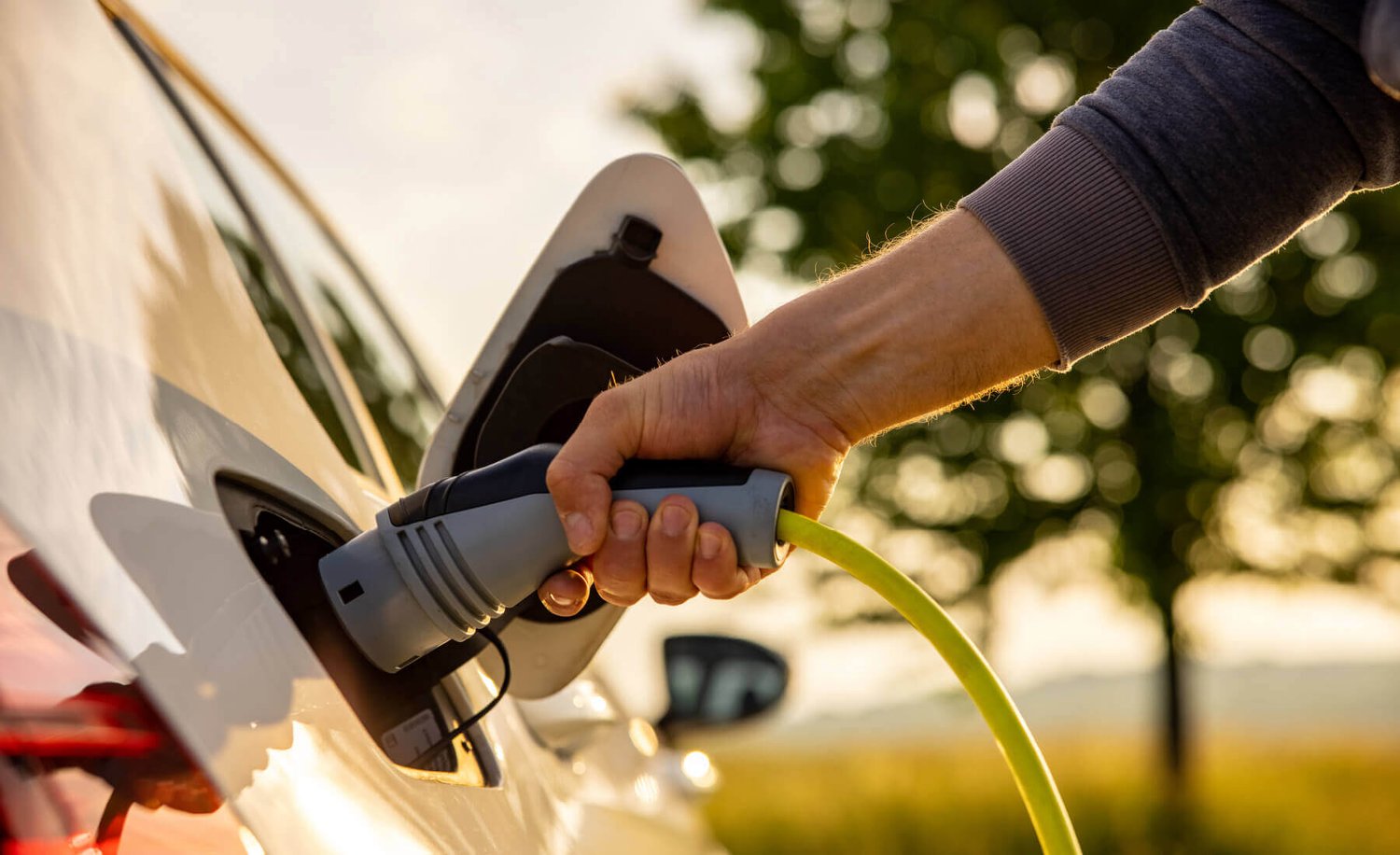Many auto insurance myths can mislead drivers, such as the belief that car color affects insurance rates. Understanding the facts can save you money and ensure you have the right coverage.
Auto insurance is essential for protecting yourself financially on the road. Unfortunately, numerous myths surround it, leading to confusion and misinformed decisions. For instance, many believe that red cars are more expensive to insure, while others think minimal coverage is sufficient for all situations.
These misconceptions can impact your coverage choices and financial security. Understanding the truth behind these myths empowers drivers to make informed decisions. This article aims to debunk common auto insurance myths and provide clear insights into what you really need to know for optimal protection.
Busting Common Auto Insurance Myths
Understanding auto insurance is essential. Many myths exist about how it works. Let’s clear up some of the most common misconceptions. Knowledge helps you make informed decisions. Here are two popular myths that need debunking.
The Color Conundrum: Does Car Color Impact Premiums?
Many people believe that the color of a car affects insurance rates. This idea is widespread but incorrect. Insurance companies do not consider car color in premium calculations. Instead, they focus on other factors, such as:
- Car model and make
- Vehicle age
- Driver’s history
- Location of the driver
These factors are more relevant than color. Therefore, you can choose any color you love without worrying about higher premiums.
The Red Car Premium Myth: Separating Fact From Fiction
Another common belief is that red cars cost more to insure. This notion is simply a myth. The insurance rate does not depend on the car’s color. Instead, it is based on:
- Vehicle safety ratings
- Repair costs
- Frequency of theft for that model
Here’s a quick comparison:
| Car Color | Impact on Insurance |
|---|---|
| Red | No impact |
| Blue | No impact |
| Black | No impact |
Focus on safe driving and vehicle maintenance. These will have a much bigger impact on your insurance premiums.

Credit: www.thezebra.com
The Truth About High-risk Drivers
Understanding high-risk drivers is crucial for anyone seeking auto insurance. Many myths surround high-risk factors. These myths can confuse drivers and lead to poor decisions. Let’s clarify what being a high-risk driver truly means.
Identifying High-risk Factors In Auto Insurance
Several factors determine if a driver is considered high-risk. Here are the most common:
- Age: Young drivers, especially teens, face higher rates.
- Driving Record: Multiple speeding tickets increase risk.
- DUI Convictions: A DUI can drastically raise insurance costs.
- At-Fault Accidents: Frequent accidents signal higher risk.
- Insurance Lapses: Gaps in coverage indicate potential trouble.
The Reality Of Insurance Costs For Risky Drivers
High-risk drivers often pay more for auto insurance. This reflects the greater chance of claims. Here’s a breakdown of potential costs:
| Risk Factor | Typical Premium Increase |
|---|---|
| Young Driver | 20% to 30% more |
| One DUI | 40% to 60% more |
| Multiple Accidents | 50% to 80% more |
| Speeding Tickets | 10% to 25% more |
High-risk drivers can take steps to lower costs:
- Complete a defensive driving course.
- Maintain a clean driving record.
- Shop around for better rates.
- Consider higher deductibles.
Understanding these factors helps drivers make informed choices. Don’t let myths guide your decisions. Know the truth about high-risk driving.
Minimum Coverage Misconceptions
Many drivers assume that minimum coverage is enough to protect them. This idea leads to serious mistakes. Understanding the facts behind minimum coverage is crucial. Let’s explore the misconceptions about minimum coverage in auto insurance.
Is Minimum Coverage Really Cost-effective?
Many believe that minimum coverage saves money. However, this isn’t always true. Here are some important points:
- Lower premiums often mean less protection.
- In an accident, you may face high out-of-pocket costs.
- Minimum coverage may not cover damages to your own vehicle.
Consider the following table to understand coverage limits:
| Type of Coverage | Minimum Requirement | Typical Costs |
|---|---|---|
| Bodily Injury Liability | $25,000 per person | High medical bills may exceed this. |
| Property Damage Liability | $15,000 per accident | This might not cover all damages. |
The Risks Of Skimping On Auto Insurance
Choosing minimum coverage carries risks. Here are some dangers:
- You may face legal issues if you cause an accident.
- Personal injuries may not be fully covered.
- Your car repairs might not be covered.
Without adequate coverage, you risk financial stress. Accidents happen unexpectedly. Protect yourself and your finances by understanding the real costs of minimum coverage.
Full Coverage Clarified
Many people think full coverage means complete protection for any situation. This belief leads to confusion and misconceptions. Understanding what full coverage really includes is crucial. Let’s dive deeper into the details.
What Does Full Coverage Actually Cover?
Full coverage typically includes two main types of insurance: liability coverage and physical damage coverage. Here’s a breakdown:
| Coverage Type | Description |
|---|---|
| Liability Coverage | Covers damages to others in an accident you cause. |
| Collision Coverage | Covers damages to your car from a collision. |
| Comprehensive Coverage | Covers non-collision incidents like theft or weather damage. |
Many assume full coverage protects against every risk. This is not true. It does not include personal injury protection or uninsured motorist coverage unless added.
Common Misunderstandings About Full Coverage Policies
Several myths surround full coverage. Here are common misunderstandings:
- It covers everything: Full coverage does not mean all risks are covered.
- It includes personal belongings: Full coverage does not protect items inside your car.
- It’s always the best option: Full coverage may not be necessary for older cars.
- All insurers offer the same full coverage: Coverage details can vary by provider.
Understanding these points helps you make informed choices. Knowing what full coverage truly entails protects you from unexpected expenses.
Personal Items And Auto Insurance
Many people believe their personal belongings are safe in their vehicles. This idea leads to confusion about auto insurance coverage. Understanding what your policy covers is essential. Let’s explore these common myths.
Are Your Personal Belongings Covered In Your Vehicle?
Your auto insurance policy does not cover personal items. Many drivers mistakenly think that auto insurance protects everything inside their car. However, this is not true.
- Items inside your car are typically not covered.
- Items can include electronics, clothing, and other valuables.
- Homeowners or renters insurance may cover these items.
Check your homeowners or renters policy for details. If you have valuable items, consider additional coverage.
Understanding Personal Property Protection In Auto Policies
Some policies offer limited protection for personal items. This is known as personal property protection. It’s essential to know how this works.
| Coverage Type | Details |
|---|---|
| Comprehensive Coverage | Protects against theft and damage. |
| Personal Property Coverage | Available as an add-on in some policies. |
| Homeowners Insurance | Covers personal items, even outside your home. |
Always read your policy carefully. Ask your agent about any unclear terms. This knowledge helps you make informed decisions.
Protect your belongings by keeping them out of sight. Lock your car. These simple steps can reduce the risk of theft.
Vehicle Size And Insurance Costs
Understanding how vehicle size affects auto insurance costs can be tricky. Many believe that smaller cars always lead to lower premiums. However, the truth is more complex. Various factors influence insurance rates beyond just the size of the vehicle.
Do Smaller Cars Guarantee Lower Insurance Rates?
Many people think smaller cars automatically cost less to insure. This is not entirely true. Insurance companies consider various factors when determining rates. Here are some key points:
- Safety Ratings: Smaller cars may have lower safety ratings.
- Repair Costs: Some small cars can have high repair costs.
- Risk of Theft: Smaller cars are often targeted more for theft.
- Driver Demographics: Younger drivers often choose smaller cars, raising risk.
The Complex Relationship Between Car Size And Insurance Premiums
The relationship between car size and insurance premiums is not straightforward. Factors include:
| Factor | Impact on Premiums |
|---|---|
| Vehicle Size | Smaller cars may have lower rates but not always. |
| Type of Vehicle | Luxury or sports cars often have higher rates. |
| Safety Features | Cars with advanced safety features may lower rates. |
| Driver History | A clean driving record can reduce rates. |
Consider these factors when assessing vehicle size and insurance costs. Do not assume that smaller is always cheaper. Each vehicle comes with its own risk profile. Evaluate your options wisely for the best insurance rates.
Myths About Car Theft And Insurance
Car theft is a serious concern for many drivers. Several myths surround it, especially regarding how theft impacts auto insurance. Understanding these myths can help you make informed choices about your coverage. Let’s clear up some common misconceptions.
Do Thieves Target New Cars More Often?
Many people believe that thieves prefer to steal new cars. This idea seems logical since new cars often have advanced technology and higher resale value. However, the reality is more complex.
- Thieves often target cars that are easier to steal.
- Older models without advanced security features are frequently taken.
- Popular models are often stolen due to high demand for parts.
According to the National Insurance Crime Bureau (NICB), the most stolen vehicles are not always the newest models. Here are some of the most stolen vehicles in recent years:
| Rank | Vehicle Model | Year |
|---|---|---|
| 1 | Honda Civic | 2000 |
| 2 | Ford Pickup | 2006 |
| 3 | Honda Accord | 1997 |
In summary, theft risk does not solely depend on whether a car is new.
The Truth About Vehicle Theft And Insurance Impact
Another common myth is that vehicle theft automatically increases your insurance rates. This is not always true.
- Insurance companies assess risk based on various factors.
- Location, driving history, and vehicle type influence rates.
- A stolen car claim might affect your rates, but it’s not guaranteed.
Here are some factors that can impact your insurance premium:
- Your driving record.
- The value of your car.
- Your insurance claim history.
- The area where you live.
Understanding these factors helps dispel the myth that theft alone determines your insurance costs.

Credit: www.desjardins.com
Loan Payoff And Total Loss Myths
Many drivers have misconceptions about what happens to their car loans if their vehicle is totaled. Understanding these myths is crucial. When a car is declared a total loss, it doesn’t always mean the loan gets paid off automatically. Let’s dive into the facts behind these common myths.
Will Insurance Always Cover Your Car Loan If Totaled?
One common myth is that insurance will always cover your car loan if your vehicle is totaled. This is not true. Here are key points to consider:
- Actual Cash Value: Insurance pays the actual cash value (ACV) of the car.
- Loan Balance: The ACV may be less than your loan balance.
- Out-of-Pocket Costs: You might need to pay the difference.
For instance, if your car is worth $15,000 but you owe $20,000, you owe $5,000 after the insurance payout. This situation is not uncommon and can lead to financial stress.
Understanding Gap Insurance And Total Loss Protection
Gap insurance is designed to cover this gap between what you owe and what your insurance pays. Here’s how it works:
| Scenario | Loan Balance | Insurance Payout | Gap Insurance Pays |
|---|---|---|---|
| Car Totaled | $20,000 | $15,000 | $5,000 |
| Car Totaled | $25,000 | $20,000 | $5,000 |
Here are a few benefits of gap insurance:
- Protects Finances: Covers the difference in payments.
- Peace of Mind: Reduces financial worry after a total loss.
- Affordable: Usually costs a small amount added to your premium.
Understanding these concepts can help you make informed decisions. Don’t let myths guide your choices. Always review your policy to ensure you have the right coverage.
The Legalities Of Auto Insurance
Understanding the legal aspects of auto insurance is crucial. Many people believe common myths about car insurance. Knowing the facts can help you avoid legal trouble and protect your finances.
Why It’s Illegal To Drive Without Insurance In The Usa
In the USA, it is illegal to drive without auto insurance. Every state requires drivers to prove financial responsibility. This means you need insurance to cover damages and liabilities in case of an accident.
- States enforce insurance laws to protect all road users.
- Driving without insurance can lead to severe penalties.
- Insurance provides a safety net for drivers and victims.
Most states require minimum coverage levels. This helps ensure drivers can pay for damages. It’s a safety measure for everyone on the road.
The Consequences Of Driving Uninsured
Driving without insurance can have serious consequences:
- Fines: Expect hefty fines if caught driving uninsured.
- License Suspension: Your driving privileges may be revoked.
- Legal Fees: You could face legal costs from accidents.
- Increased Insurance Rates: Future insurance premiums may rise.
- Financial Liability: You may need to pay for damages out of pocket.
Consider the risks before driving without insurance. Protect yourself and others by ensuring you have proper coverage.
| Consequence | Description |
|---|---|
| Fines | Significant monetary penalties for driving uninsured. |
| License Suspension | Loss of driving privileges, often for a set period. |
| Legal Fees | Costs associated with legal representation in court. |
| Increased Insurance Rates | Higher premiums when applying for insurance later. |
| Financial Liability | Responsibility for damages and injuries in accidents. |

Credit: purvesinsurance.com
Dispelling The Minimum Legal Coverage Myth
The myth of minimum legal coverage often leads drivers to make poor decisions. Many believe that carrying only the minimum required insurance is sufficient. This misconception can have serious financial consequences. Understanding what minimum coverage truly entails is essential for every driver.
Is Opting For Minimum Coverage A Wise Decision?
Choosing minimum coverage might seem like a smart money-saving choice. However, it often leaves drivers vulnerable.
- Low Protection: Minimum coverage may not cover all damages in an accident.
- Out-of-Pocket Costs: You could face hefty bills after an accident.
- Legal Risks: In some states, minimum coverage may not meet all legal requirements.
Many drivers fail to realize the full implications of minimum coverage. Here are some important facts:
- Minimum coverage varies by state.
- It usually includes liability, but not collision or comprehensive.
- Higher coverage limits can provide better peace of mind.
The Long-term Effects Of Minimum Auto Insurance
Minimum auto insurance can lead to long-term financial strain. Here’s why:
| Effect | Description |
|---|---|
| Increased Financial Liability | Higher out-of-pocket expenses for damages not covered. |
| Potential Lawsuits | Inadequate coverage can lead to lawsuits from injured parties. |
| Higher Premiums Later | Accidents with low coverage can raise future insurance rates. |
Driving with minimum coverage can seem appealing. Yet, the risks often outweigh the benefits. Ensure you have enough protection to cover potential losses.
Frequently Asked Questions
Why Is It Illegal To Drive Without Insurance In The Usa?
Driving without insurance is illegal in the USA because it poses financial risks. States require proof of financial responsibility to cover damages or liabilities from accidents. This helps protect all road users and ensures that victims can receive compensation. Compliance with insurance laws promotes safer driving practices.
What Color Cars Are More Expensive To Insure?
Car color does not affect insurance rates. Factors like age, location, and driving record play a significant role in determining costs. Therefore, whether a car is red or white, insurance premiums will remain largely the same based on these other criteria.
Who Do Auto Insurance Companies See As The Highest Risk?
Auto insurance companies see high-risk drivers as younger or new drivers, those with DUI convictions, multiple speeding tickets, at-fault accidents, reckless-driving convictions, and lapses in coverage. These factors significantly increase the likelihood of claims, leading to higher premiums.
Is Auto Insurance A Real Thing?
Yes, auto insurance is a real thing. It’s a contract that protects you from financial loss due to accidents or theft. You pay a premium, and the insurance company covers your losses as specified in your policy. Most states require it for legal driving.
Conclusion
Understanding the truth behind auto insurance myths can save you money and frustration. Being informed helps you make better decisions for your coverage needs. Don’t let misconceptions dictate your choices. Stay educated and choose wisely to protect yourself on the road.
Knowledge is your best ally in navigating auto insurance.

Hi, i think that i saw you visited my weblog thus i came to “return the favor”.I’m trying to find things to improve my website!I suppose its ok to
use a few of your ideas!!
Greetings,
I hope this message finds you well, I’m April Cameron from Blue Rock, and I’m reaching out to introduce an exclusive investment opportunity that aligns with your financial objectives. If you’re interested in learning more, please reply to this email at [email protected].?
Best regards,
April Cameron